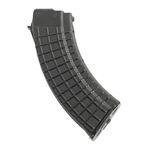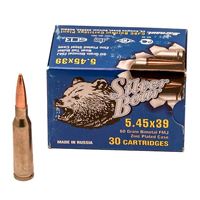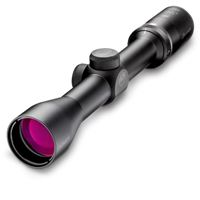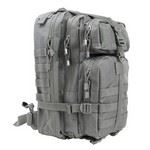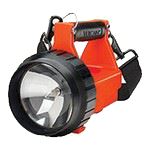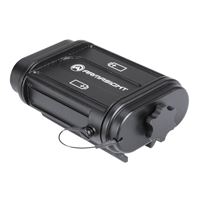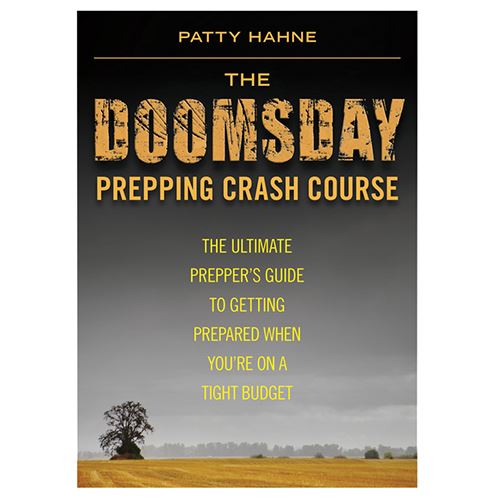The focus of this report is more the cartridge than the handgun, but the revolvers that chamber the cartridge are linked to the .45 ACP’s popularity. The Smith and Wesson 1917 .45 ACP revolver was a legendary handgun to a young man reading everything he could about handguns, but an ordinary handgun in the shops during the 1970s. The 1917 isn’t rare today, but it is no longer as cheap as it once was either. My first .45 ACP revolver was purchased for less than $100.
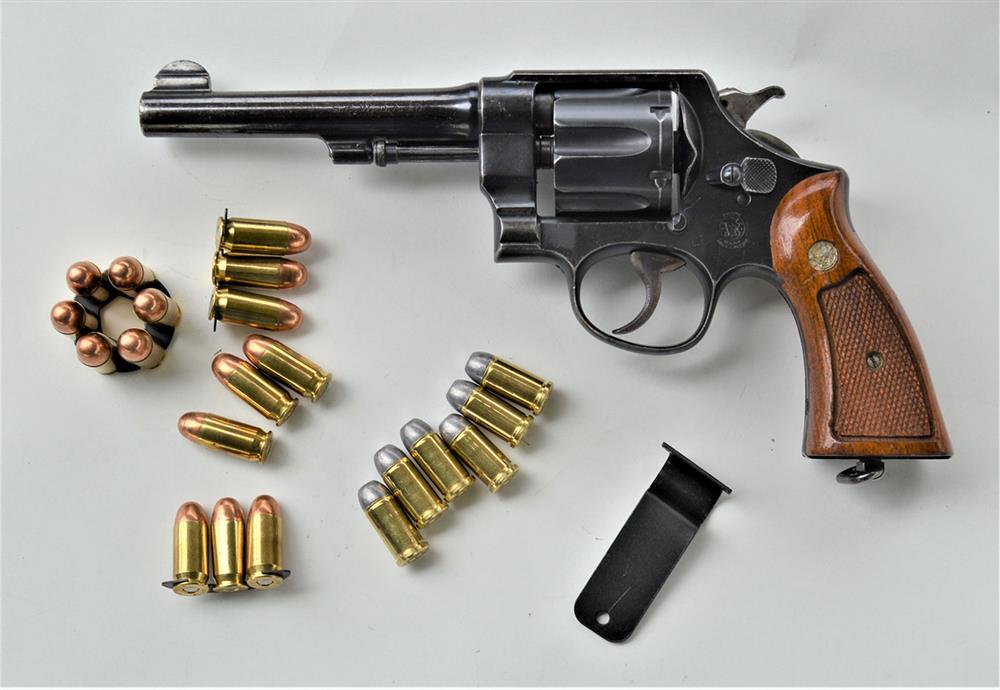
While I have owned the target-sighted heavy-barrel 625 revolver, I find the relatively light, fast handling and burly 1917s more to my taste. I tend to look forward rather than back. The fundamental premises of youth, however, are hard to shake. I grew up among experienced shooters, hunters, and ex-soldiers who had strongly ingrained skepticism concerning self-loading handguns. Any dissent was viewed with suspicion.
Every handgun in the family was a revolver. My grandfather took a good bit of small game with his Smith and Wesson .38. I used my other grandfather’s Colt .32 to do the same. My grandparents and father indulged my interests when I was quite young, and I never let them down. I encountered many interesting handguns; my first big-bore handgun taught me a great deal.
The fixed sights of the Model 1917 were no challenge for my young eyes. I graduated from a Lee Loader while in high school and began loading the .45 ACP on a Lyman press. I learned a lot about marksmanship, handling a big bore, handloading, and hunting, and developed a zest for researching historical facts. This is a thrice told tale but still interesting.
Before the United States entered World War I, Britain was hard-pressed for handguns and purchased thousands of Colt and Smith and Wesson revolvers in .455 Webley. When America entered the war, we had perhaps 30,000 1911 handguns. We needed to arm every soldier for what was shaping up as a pistol war.
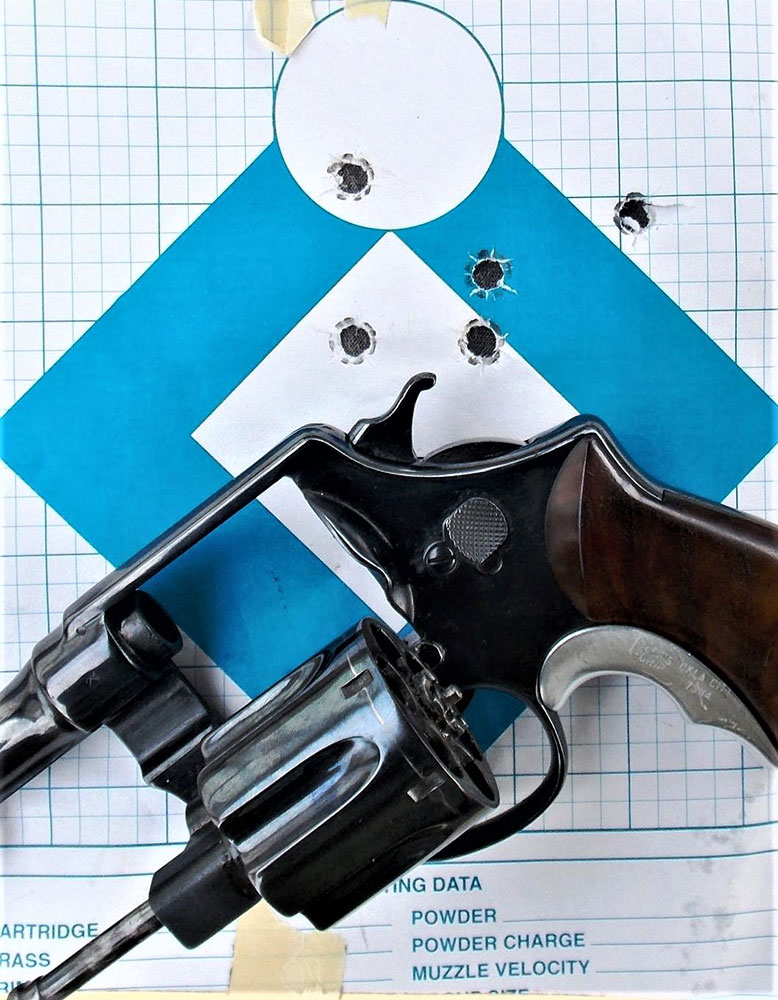
Colt simply could not fill the need for 1911 handguns, and neither could Remington UMC or other contractors. Smith and Wesson had production capacity geared up and simply re-chambered its big frame revolvers for the .45 ACP cartridge. Since the .45 automatic cartridge does not have a cartridge-case rim, the rounds simply fell into the cylinder. After early testing, a properly chambering cylinder design was implemented, although the ejector star would not eject a rimless cartridge.
By most reports, the Smith and Wesson was preferred to the similar Colt 1917, a re-chambered New Service revolver. While the Smith and Wesson and Colt are each big burly revolvers, the Smith is slightly smaller and better balanced. I have never read that speed loading was part of the design envelope. Rather, the project was about expedience. However, the design resulted in the fastest revolver to load and unload ever made in America.
With a conventional revolver, the barrel must be pointed upward to quickly unload the cylinder. Not so with the 1917. Simply hit the ejector rod, and the half-moon clips and cartridges are ejected—a neat trick, no matter the angle. Then, slap loaded moon clips in, and you are ready to go.
Smith & Wesson developed the half-moon clip which held three cartridges. Those clips neatly solved the problem of using a self-loader’s cartridge in the revolver by providing head space with the .050-inch-thick clips. The cartridge was issued in half-moon clips. (All to avoid having two handgun calibers in the supply chain).
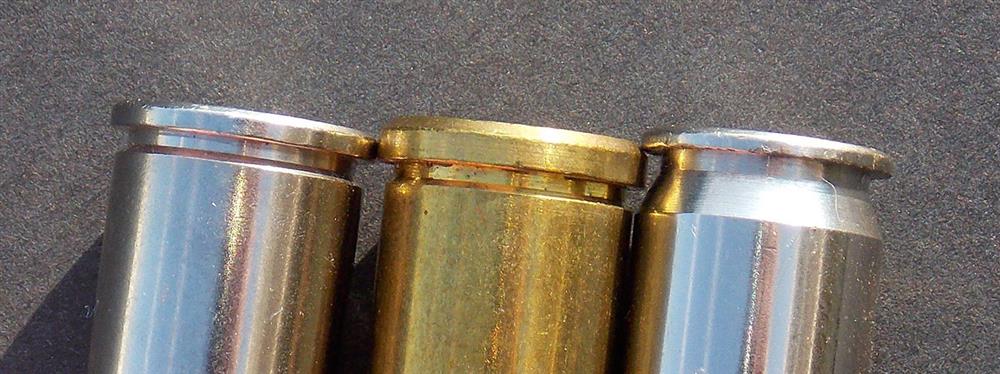
The modern full moon clip by Wilson Combat holds a full load of six cartridges. While the original set of two moon clips were faster than any conventional revolver, the modern six-shot moon clip is faster. I fired my revolver with moon clips and without. As long as you keep load pressure in standard .45 ACP limits of 18,000 to 21,000 psi, the revolver performs well. The 5.5-inch barrel N frame revolver is faster handling than the heavy barrel target-sighted magnums and clears leather quickly. However, it is with handloading that you bring the piece to life.
When I began loading the .45 ACP, I had a good supply of hard-cast 230-grain RNL bullets. I also tried 200-grain SWC bullets and the 255-grain SWC designed for the .45 Colt. While I use Titegroup and WW 231 more often today, the only powder I had then was Unique. I did not understand quite why, but accuracy was poor with the RNL bullet. I believe that the bullet tipped a bit in the long flight through the 1917’s cylinder and throat.
The SWC bullets were notably more accurate. The difference is not nearly as pronounced in .45 ACP automatics. The 255-grain SWC was quite accurate. As long as the hard cast bullet has sufficient bearing surface, it will be a good shooter.
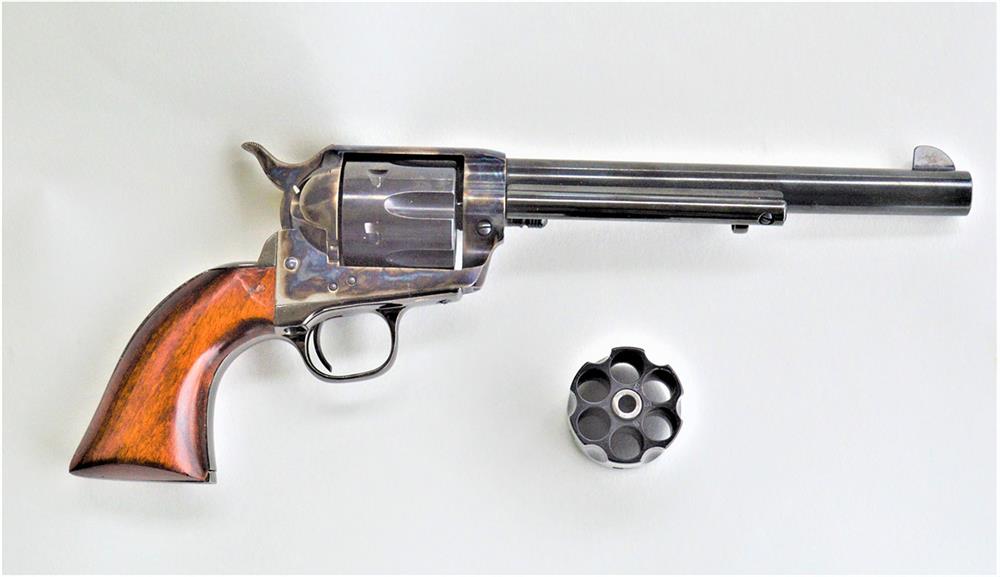
I loaded 6.0 grains of Unique for about 830 fps. This 255-grain SWC load hit harder than any .45 ACP factory load. The 1917 was traded for a 1911. I could only afford one or two good handguns and the 1911 rode on my uniform belt for some time. I am thankful I now have room for more than one good gun, in fact for many, and that I am able to appreciate the Smith and Wesson more than ever. The .45 ACP is my favorite cartridge. The cartridge generates low pressure compared to the Magnums, which is good for longevity. Accuracy potential is excellent. The cartridge relies on bullet weight and frontal mass rather than velocity for wound potential. There is no better personal defense cartridge. It will do for thin skinned game at moderate range.
The .45 Auto Rim
After World War I, the U.S. military declared the 1917 revolvers as surplus. Cops, outdoorsmen, and anyone who wanted a high-quality big-bore revolver latched onto them. They were available for a much lower price than the .44 Special or the .38-44 Outdoorsman. Most shooters did not want to use moon clips. Great for combat, but they were an aggravation for day-to-day use.
Remington introduced the .45 Auto Rim cartridge, which is simply a .45 ACP with a revolver-like rim. The cartridge rim is quite thick and takes the place of a sheet metal clip. The cartridge head spaces properly and is ejected by the ejector star. This gives you the advantage of using the moon-clipped revolver for personal defense or competition and the .45 Auto Rim for hunting and target practice.
The 230-grain lead bullet in the original .45 Auto Rim loading is loaded to .45 ACP velocity, about 830 fps. Handloaders realized that the case capacity and strong head of the .45 AR allowing improving .45 ACP ballistics. It is not difficult to jolt a 255-grain SWC to 900 fps. A 225-grain Flat Point may be sent to 1,000 fps. Take care in using those handloads because the condition of original handguns varies considerably, yet each load is within the realm of .45 AR performance.
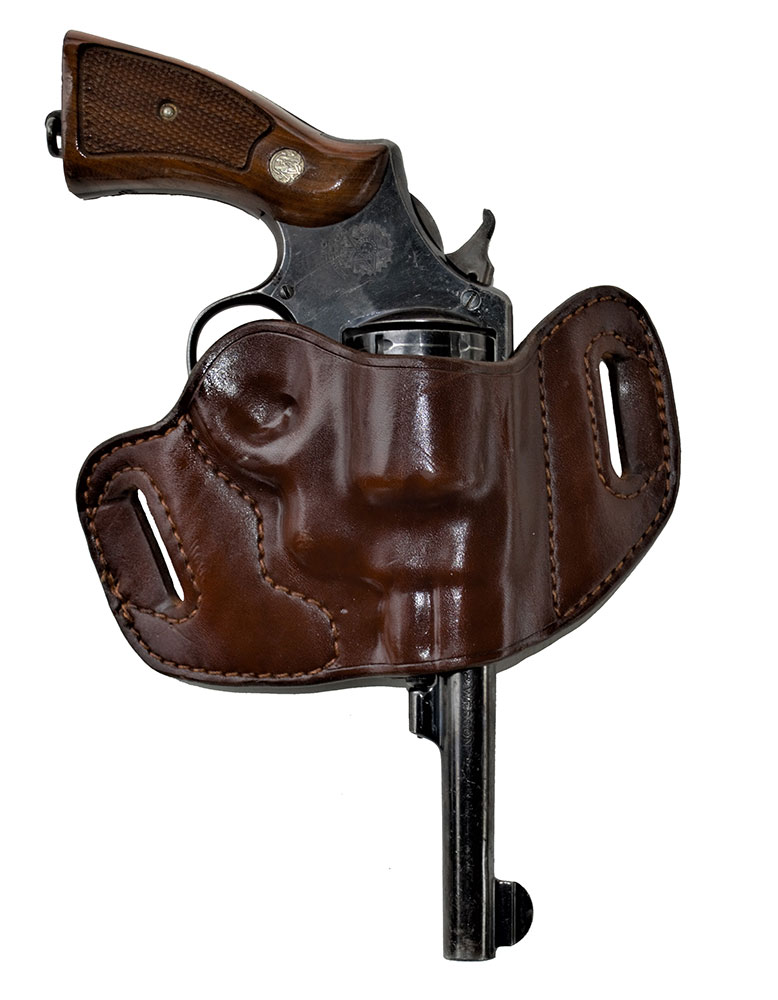
The .45 AR easily reaches the performance of standard .45 Colt factory loads in a quality double action revolver. My present .45 ACP revolver is an original Brazilian contract M1937. It has been used a good deal and is not a collector’s item. The old style, long, double-action trigger is smooth. The 1917 is as rugged as any handgun, and it is accurate enough for most chores.
I enjoy loading for this revolver, and it will accept any load I have worked up for the 1911 .45. I normally run a 200-grain SWC at about 800 fps. This is a mild and accurate load. Buffalo Bore offers factory loads in .45 AR that are a godsend to those who do not reload. My choice is the 255-grain 820 fps load.
Another option is one I have waited 40 years to find. I had read about spare cylinders in .45 ACP fitted to .45 Colt SAA revolvers but never owned one. While the Ruger Blackhawk is a fine option, I prefer the SAA look. (.45 ACP single action revolver chambers will not accept the .45 AR cartridge, and neither will the Taurus double action Tracker, a five-shot .45 ACP revolver that uses a proprietary moon clip.)
I located a very smooth Uberti SAA in .45 Colt with a 7.5-inch barrel. The big surprise was the .45 ACP cylinder in the Dakota’s box. I have enjoyed this combination immensely. I am never happier than when using and firing a single action revolver. This revolver is a bit more accurate than the typical 1917-type revolver. I must admit, I locked in the .45 ACP cylinder and have never used the .45 Colt cylinder!
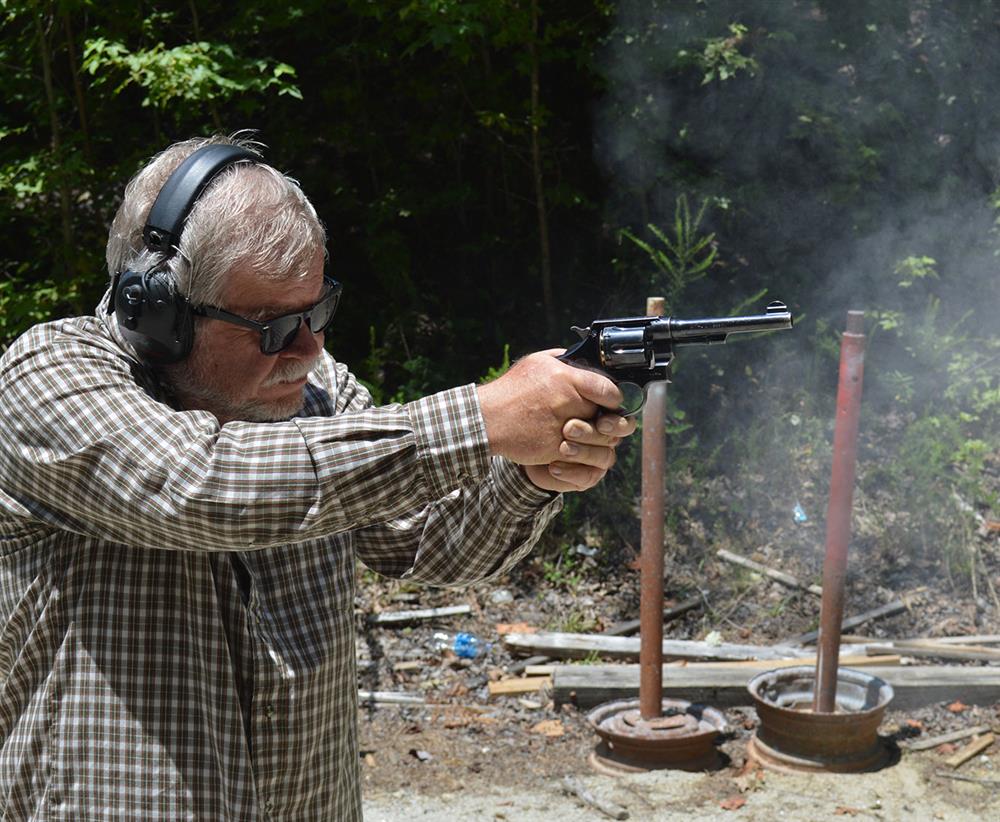
The .45 ACP does everything I need to do in a recreational handgun. Yet the potential is there for deer sized game at modest distance. It will group five shots into two inches or less at 25 yards. The 1917 is good for less than three inches with most loads and 2.5 inches with a very few.
While many carry magnum revolvers when hiking or traveling, I find the .45 ACP/.45 Auto Rim combinations suit my needs better. I have a selection of good 1911 handguns that I spent two decades or more building. I have but two .45 ACP revolvers. Each takes my favorite handgun cartridge and keeps me interested in handloading and marksmanship. And in the dark of night, when the wolves howl, they keep me safe and are the subject of much enjoyment.
Handloads
Many years ago, Dave Andrews of Speer wrote the .45 AR section of a loading manual. It stuck with me. Today, my handloads in this strong case include lead bullets but also the superbly accurate XTP. The 250-grain XTP may be used with good results in the .45 Auto Rim. Even at 800 fps penetration is excellent. I have used the 200-grain XTP, a wonderfully accurate bullet, at 1,100 fps with good results.


